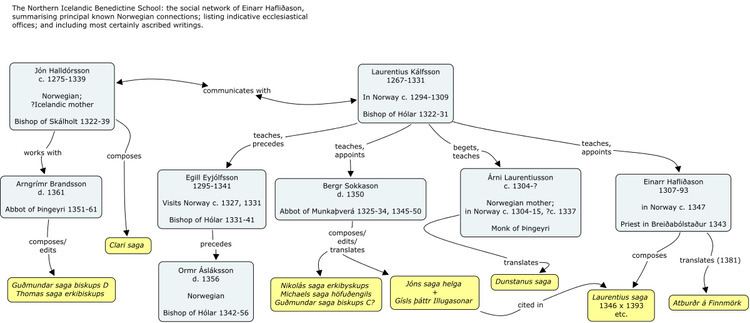 | ||
The North Icelandic Benedictine School (Norðlenski Benediktskólinn) is a fourteenth-century Icelandic literary movement, the lives, activities, and relationships of whose members are attested particularly by Laurentius saga biskups. This movement is characterised by an elaborate (or 'florid') rhetorical style new to Icelandic saga-writing at the time (known in English as the 'florid style', Scandinavian as the florissante stil, and Icelandic as the skrúðstíll), with Latinate grammar, Latin and Low German loan-words; and, unusually for Icelandic sagas, which are usually anonymous, a close-knit network of identifiable authors (sometimes self-identified, sometimes named by others). The school is associated particularly with the Northern Icelandic Benedictine monasteries of Þingeyri and Munkaþverá in the diocese of Hólar, and with the students of Jón Halldórsson and Lárentíus Kálfsson.
The principal authors and works associated with this literary movement are:
Among the various manuscripts which can be associated with the movement, the mid-fourteenth-century AM 657 a-b 4to is a good example: it is the oldest manuscript to contain the text of Bergr's Jóns þáttr Halldórssonar; it also contains Marian miracles, Bergr's Mikaels saga; Jón Halldórsson's Drauma-Jóns saga; Hákonar þáttr Hárekssonar; Jón Halldórsson's Clári saga, as well as several exempla.
